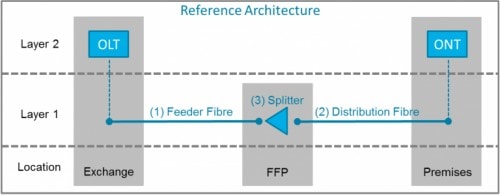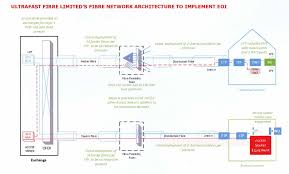Unbundled fibre is coming, by 2020 it will be available for use by retail service providers. What that means for end users is uncertain, in fact what it means for telcos is uncertain, but key details are starting to emerge.

Chorus recently released their product roadmap and technical document for this product, and while all the detail is up for discussion during the consultation period, it held some interesting points.
Service provided to deploy ISP supplied ONTs and splitters
“Chorus propose that an unbundler would supply a splitter (that Chorus would install at the FFP), and an ONT (that Chorus would install at the end customer premises).” –Chorus Technical Document Layer 1 Unbundling_September 2018 final – section 2.2.
Under the proposed model, the unbundled provider would not need to leverage its own resources to enable on site installs, in fact it may not even be an option. This means two key things:
- The playing field is fairly even in terms of viable access to the product
- Chorus have found a non-regulated income stream through the professional services required for installation
- Potential for Chorus to offer guidance on ONT and splitter models making the testing/deployment process faster and more cost effective
Designs mooted by big telcos look to be discounted at this stage
Chorus provided a note within Appendix A of their technical document stating that while submissions had been received by RSPs suggesting wavelength unbundling (splitting existing fibre into different frequencies) and virtual unbundling (ability to share slices of the network at the exchange), these were not considered because:
- They are emerging, or recent, technologies and therefore were never listed as a requirement in the agreement signed between the Crown and Chorus 10 years ago.
- Short timelines until deployment mean that well established technologies which the network was built to support demand priority.
A final point
Due to customer density per FFP (splitter cabinet) being fairly low (between 48 and 256), and the number of FFPs exceeding 19,000, the unbundled product is likely a better fit for residential providers, but of course a by-product of deploying unbundled services based on residential demand will be the ability to offer business services over the same infrastructure. For business focused ISP’s the best fit will be CBD areas and FFPs servicing business parks. Huge caveat on this – we still don’t know how the pricing looks.
Updated 23/10/2018
I spoke with Chorus today and looks like current thinking is that the splitter for the FFP will be provided and installed by them, and Chorus will not provide an ONT, but will install 3rd party ONTs on request.
Things are very fluid at the moment, but current thinking detailed in below diagram.

Brendan Ritchie

